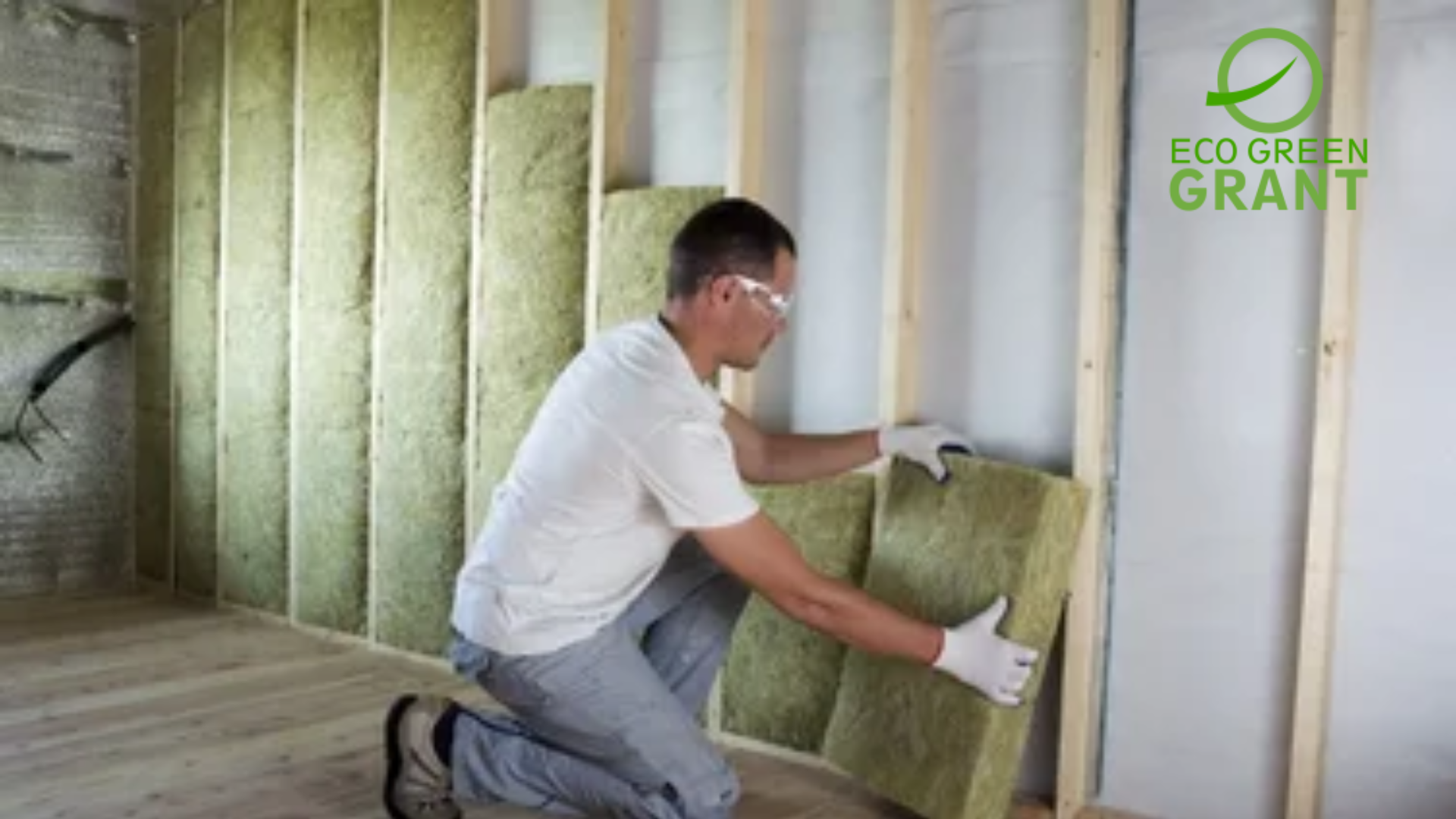Free Cavity Wall Insulation plays a crucial role in improving energy efficiency, reducing heat loss, and lowering energy costs. Nottingham City Council cavity wall insulation grants offer assistance to eligible homeowners, enabling them to insulate their homes without bearing the full cost. The grant process, available through programs like ECO4 and LAD, provides residents with an opportunity to enhance their home’s thermal performance. EcoGreenGrant helps navigate the application process, ensuring smooth, hassle-free insulation installation.
What Is Nottingham City Council Cavity Wall Insulation?
Definition and Purpose
Free Cavity Wall Insulation is a method used to prevent heat from escaping through the gaps in external walls. It involves filling the gap between the two layers of a wall with insulation materials such as mineral wool or expanded polystyrene beads. Nottingham City Council promotes this technique to improve energy efficiency in homes. With proper installation, this insulation can reduce heat loss by up to 35%, significantly lowering heating costs in the long run.
Role of Nottingham City Council
Nottingham City Council supports cavity wall insulation by offering grants to eligible households. These grants, available through government-backed schemes like ECO4 and LAD, help lower-income households improve their homes’ energy performance. The council’s initiative aims to reduce fuel poverty, lower energy bills, and meet environmental goals such as reducing carbon emissions. EcoGreenGrant partners with the council to ensure smooth application processing and timely installation.
Common Insulation Materials
Common materials used for cavity wall insulation include mineral wool, expanded polystyrene beads, and polyurethane foam. Mineral wool is known for its fire resistance and durability, while expanded polystyrene beads are cost-effective and easy to install. Polyurethane foam is injected into narrow or irregular cavities, making it ideal for harder-to-reach spaces. The material chosen depends on the wall cavity’s size and condition. Each of these materials provides excellent thermal resistance.
How It Fits into Energy Strategy
Cavity wall insulation is a key part of Nottingham’s overall energy strategy to reduce carbon emissions and lower energy consumption. By improving the insulation of existing homes, the city aims to make significant strides towards net-zero goals. This approach helps residents save on energy bills while reducing their reliance on fossil fuels for heating. EcoGreenGrant aids homeowners by ensuring that they receive the right insulation suited for their property’s needs, boosting both energy savings and sustainability.
Eligibility and Grant Application
Who Qualifies for Grants?
Homeowners and private tenants in Nottingham may qualify for cavity wall insulation grants if their properties are not already insulated and if they meet certain criteria. The council typically prioritizes low-income households, pensioners, and tenants receiving specific benefits. Properties must have cavity walls that are a minimum of 50 mm wide to ensure proper insulation installation. To confirm eligibility, homeowners can check their property’s EPC rating or use the council’s online eligibility checker.
Required Documentation
To apply for a grant, homeowners will need to submit several documents, including proof of identity, proof of address, and financial documentation such as Council Tax bills or benefits receipts. In some cases, an Energy Performance Certificate (EPC) is also required. This information helps determine eligibility for full or partial grant funding. EcoGreenGrant offers assistance in preparing and submitting the necessary paperwork to streamline the application process.
Typical Grant Coverage
Grants offered by Nottingham City Council can cover the full cost of installation for eligible households. This includes the material and labor costs associated with cavity wall insulation. In cases where additional work is needed, partial grants may be available. However, with full grant funding, homeowners are not required to pay any upfront costs. This makes cavity wall insulation a highly accessible energy-saving option.
Installation Process Overview
Pre‑Installation Survey
Before installing cavity wall insulation, a qualified installer will conduct a pre-installation survey. During this assessment, the installer checks the width and condition of the cavity. They also assess the property’s walls for dampness or any obstructions that could hinder the installation process. This ensures that the insulation material selected will work effectively in the particular conditions of the property. A proper survey is crucial for a successful insulation installation.
Sealing and Preparation
After the survey, the installer prepares the walls by sealing off any gaps around windows and doors. This is done to prevent the insulation material from escaping during the installation process. The installer also ensures that all areas are ready for the injection of the insulation material. Preparation is key to maximizing the thermal performance of the insulation and ensuring long-lasting results. Proper sealing also helps prevent air leaks.
Material Injection
The insulation material is injected into the cavity through small drilled holes, usually about 25 mm in diameter. The installer uses a pump to inject the insulation material into the space between the walls, ensuring that the entire cavity is filled. Depending on the material used, this process may take anywhere from 1–3 hours. It is done carefully to ensure that the material settles properly and provides maximum insulation effectiveness.
Finishing and Clean‑up
Once the insulation is in place, the installer seals the holes made during the installation process with matching mortar or brick slips. The work area is then thoroughly cleaned, and the property is left neat and tidy. The installer may also conduct a final inspection to ensure that the insulation has been properly installed and that there are no gaps or air leaks. After installation, homeowners should experience an immediate reduction in drafts and better temperature control.
Key Benefits of Cavity Wall Insulation
Significant Energy Savings
Cavity wall insulation is one of the most cost-effective ways to improve a home’s energy efficiency. Homes with properly insulated cavity walls can save up to £240 annually on heating costs. This is especially important in Nottingham, where winters can be harsh, and heating bills can significantly impact the budget. Insulation ensures that warmth stays inside the house, requiring less energy to maintain comfortable temperatures.
Reduced Carbon Emissions
By preventing heat loss, cavity wall insulation reduces the need for heating, thereby lowering energy consumption. This directly contributes to lower carbon emissions, helping homeowners minimize their environmental impact. As Nottingham strives to meet carbon reduction targets, cavity wall insulation plays a significant role in achieving sustainability goals. Homes with better insulation use less energy, making them more eco-friendly.
Year‑Round Comfort
Cavity wall insulation provides a more stable indoor temperature, reducing cold spots in winter and keeping homes cooler in summer. This year-round comfort is especially valuable in Nottingham’s variable climate, where temperatures can fluctuate dramatically. Insulation helps to maintain a balanced internal environment, enhancing the comfort of those living in the home. A more consistent temperature improves the overall living experience for families.
Noise Reduction
In addition to its thermal benefits, cavity wall insulation also provides soundproofing properties. It helps to reduce noise from external sources, such as traffic or nearby construction. This is particularly useful in urban areas like central Nottingham, where noise pollution can be an issue. The insulating material absorbs sound waves, making homes quieter and more peaceful. This benefit enhances quality of life and comfort.
How EcoGreenGrant Supports You
End‑to‑End Grant Assistance
EcoGreenGrant offers end-to-end assistance with the Nottingham City Council cavity wall insulation grant process. From verifying eligibility to submitting documents, we handle every step for homeowners. Our goal is to make the application process as smooth and straightforward as possible, ensuring timely approval. With EcoGreenGrant’s help, homeowners can rest easy knowing their paperwork is in good hands.
Professional Installation Coordination
Once the grant is approved, EcoGreenGrant coordinates with certified installers to schedule the insulation installation. We ensure that the right professionals carry out the work to the highest standards. Our team is committed to ensuring that each installation is completed to satisfaction, with no disruption to daily life. We also follow up to ensure everything meets your expectations.
Post‑Installation Support
After the installation, EcoGreenGrant provides follow-up support, offering any additional assistance needed. We conduct post-installation checks to ensure that the insulation is performing as expected and address any concerns. Our aim is to ensure that homeowners experience maximum energy savings and comfort from their newly installed insulation.
Additional Energy‑Saving Advice
EcoGreenGrant doesn’t just stop at insulation. We offer valuable advice on other energy-saving measures such as loft insulation, energy-efficient heating systems, and renewable energy options. By taking a holistic approach to energy efficiency, we help homeowners save even more on energy bills while reducing their carbon footprints.
FAQs
What is cavity wall insulation and how does it work?
Cavity wall insulation is a process of filling the space between two layers of external walls in a building with insulating material like mineral wool or foam. This prevents heat from escaping, making your home warmer in winter and cooler in summer. Nottingham City Council cavity wall insulation helps improve energy efficiency and reduce energy bills for eligible households.
Who qualifies for Nottingham City Council cavity wall insulation grants?
To qualify, your home must have uninsulated cavity walls and you should meet certain financial or energy efficiency criteria. Priority is given to low-income households, people on government benefits, and properties with poor energy ratings. The council’s programs, like ECO4, help make homes energy-efficient at little to no cost.
What documents do I need to apply for a cavity wall insulation grant?
You’ll typically need proof of ID, proof of address, and documents showing eligibility such as benefit entitlement letters or an EPC (Energy Performance Certificate). Working with trusted facilitators like EcoGreenGrant can simplify the documentation and submission process.
How long does the cavity wall insulation process take?
From survey to installation, the process can take around 1–2 weeks, depending on scheduling and grant approval. The actual installation typically takes a few hours to complete. Nottingham City Council works with certified installers to ensure timely and professional insulation services.


